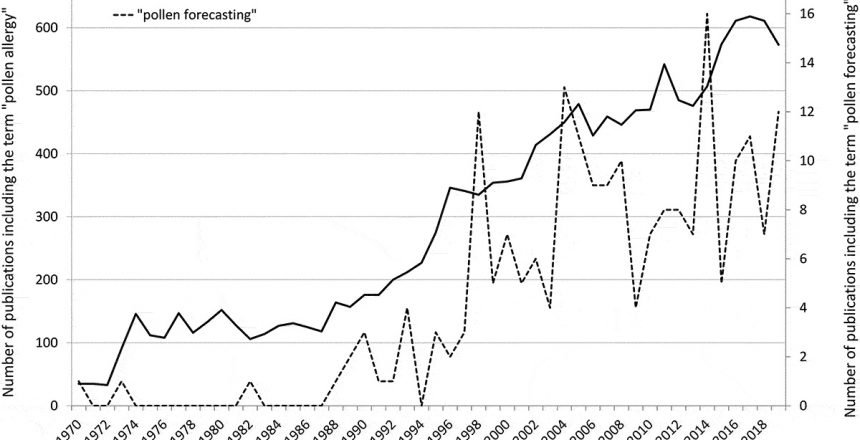An interesting article about the increase in scientific publications on the subject of pollen allergy and pollen forecasting. Among them, automatic pollen monitoring plays a crucial role. Pollen allergy in the clear focus of science:
Public awareness of the rising importance of allergies and other respiratory diseases has led to increased scientific effort to accurately and rapidly monitor and predict pollen, fungal spores and other bioaerosols in our atmosphere. An important driving force for the increased social and scientific concern is the realisation that climate change will increasingly have an impact on worldwide bioaerosol distributions and subsequent human health. In this review we examine new developments in monitoring of atmospheric pollen as well as observation and source-orientated modelling techniques. The results of a Scopus® search for scientific publications conducted with the terms ‘Pollen allergy’ and ‘Pollen forecast’ included in the title, abstract or keywords show that the number of such articles published has increased year on year. The 12 most important allergenic pollen taxa in Europe as defined by COST Action ES0603 were ranked in terms of the most ‘popular’ for model-based forecasting and for forecasting method used. Betula, Poaceae and Ambrosia are the most forecast taxa. Traditional regression and phenological models (including temperature sum and chilling models) are the most used modelling methods, but it is notable that there are a large number of new modelling techniques being explored. In particular, it appears that Machine Learning techniques have become more popular and led to better results than more traditional observation-orientated models such as regression and time-series analyses.
Jose María Maya-Manzano, Matt Smith, Emma Markey, Jerry Hourihane Clancy, John Sodeau & David J. O´Connor (2021) Recent developments in monitoring and modelling airborne pollen, a review, Grana, 60:1, 1-19, DOI: 10.1080/00173134.2020.1769176

